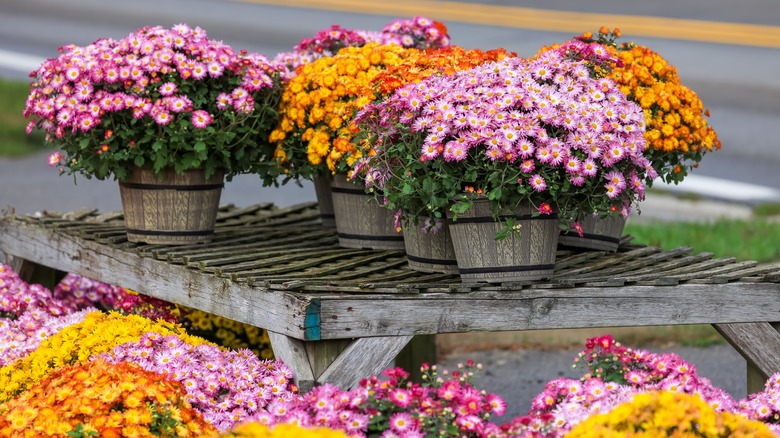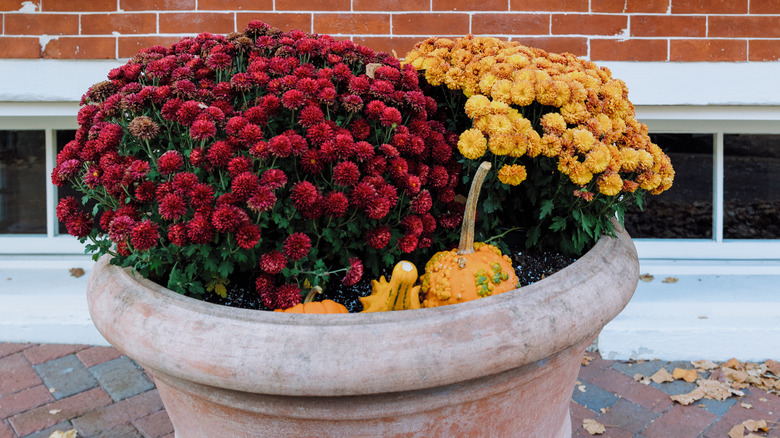The Best Time Of Year To Buy Mums For Lasting Fall Color All Season
When spring rolls around and you're happily strolling the aisles of lush greenery at your local garden center, the desire to buy every beautiful plant you lay your eyes on is real. Mums (Chrysanthemum spp.), in particular, with their wide color variety and dazzling blossoms, are sure to catch your eye. However, if you're hoping to have those potted mums last straight through the fall season, spring may not be the best time to make that purchase. Instead, to get the most out of your fall mums, wait until about mid-September to buy them.
By halfway through September, you'll likely be done with summer heatwaves, which can have negative impacts on your mums. That said, if it's still especially warm where you are, waiting until late September or even early October might be best. Although waiting can be difficult, mums thrive in the cool fall weather and will play a major role in helping you make the most of your autumn garden.
What makes mid- to late September the best time to buy potted mums?
One of the biggest reasons you should wait until mid- to late September to buy mums is that the extreme summer heat can do some serious damage, leaving you with potted flowers that have seen better days. High temperatures, particularly those reaching 85 degrees Fahrenheit or higher, can stunt the growth of mums and lead to issues such as poor branching, color reversion or fading, and fewer flowers overall.
These are all symptoms of something called heat delay, which is common in mums that are planted too early. Waiting until temperatures drop to about 70 to 75 degrees during the day and roughly 60 degrees at night will help prevent these symptoms and allow your plants to bloom properly, in full color. If you want to go the extra mile, repotting your chrysanthemums when you bring them home is another simple trick that'll make outdoor mums last all season long. So if you're hoping to have a healthy, colorful autumn garden, wait until the temperatures are right to bring your potted mums home from the garden center.

